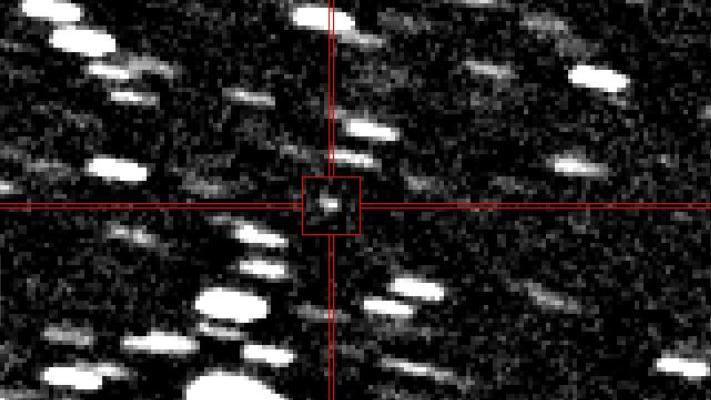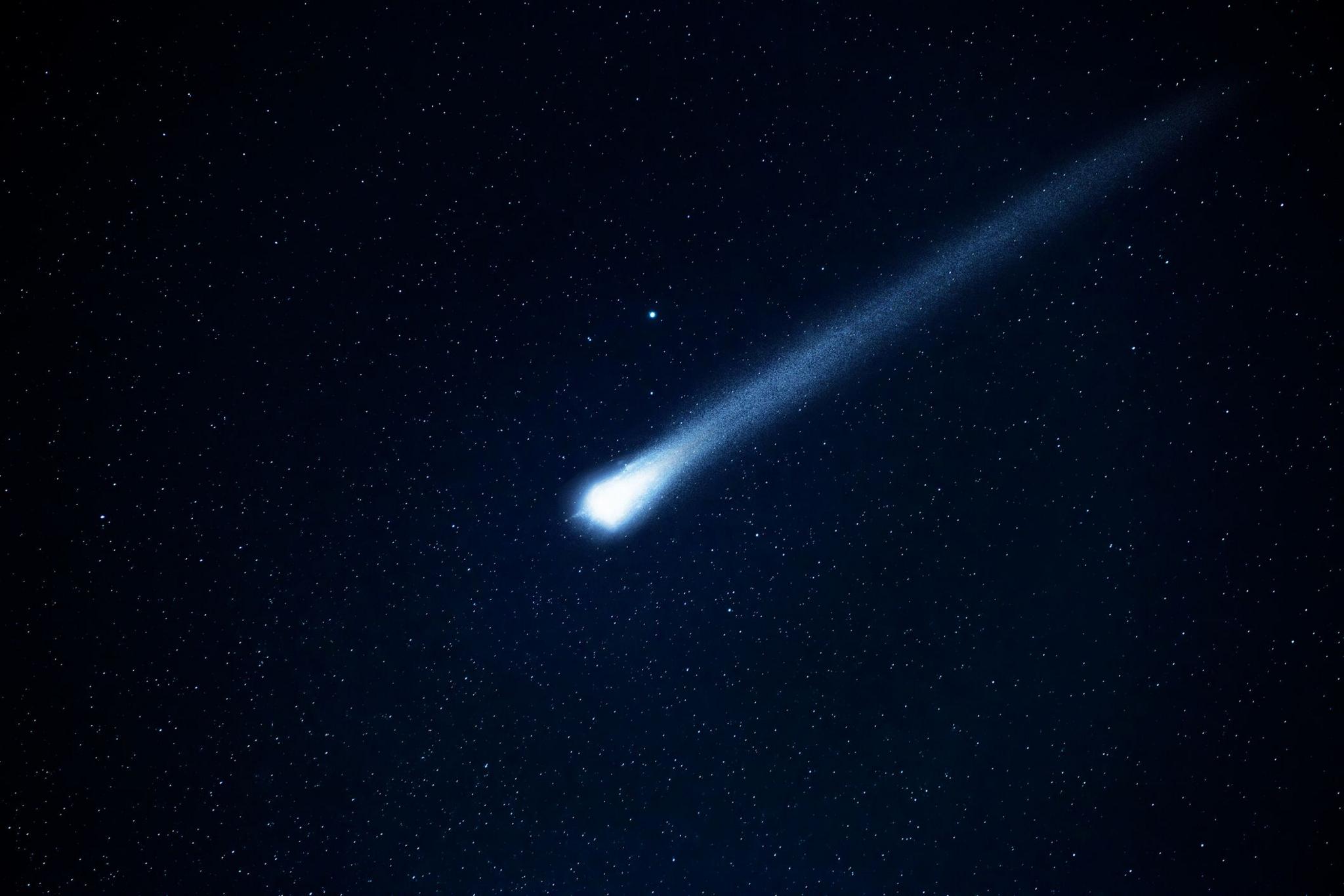Astronomers spot speedy object that's travelled from outside the Solar System

The 3l/ATLAS comet can be seen here pictured in the red box
- Published
Astronomers have discovered an interstellar object speeding through our Solar System.
Named 3l/ATLAS, the comet is estimated to be around six-12miles in length and is travelling at over sixty kilometres a second.
It is expected to steers clear of Earth and pass inside Mars's orbit, before swinging past the Sun and exiting the Solar System in the next few years.
It's only the third time that experts have spotted an object in the Milky Way that's come from a different solar system.
More space news
Nasa's Mars Orbiter is on a roll
- Published1 July
School's Lego man goes on out-of-this-world adventure
- Published30 June
James Webb space telescope spots its first exoplanet
- Published27 June
What did scientists find?

Scientists believe that 3l/ATLAS is a comet, similar to the one pictured here
According to Nasa, 3l/ATLAS was first spotted on 1 July, by a telescope in the south American country of Chile.
Experts think that the visitor from the stars is likely to be the largest one ever detected, and it has been classified as a comet, or a cosmic snowball.
It's only the third time that such an object has been spotted in the Milky Way.
The first interstellar visitor was discovered in 2017, and the second one in 2019.
Astronomers say that 3l/ATLAS appears to be zooming more than 37 miles a second.
However, scientists say that it will not travel close to our planet.
Richard Moissl from the European Space Agency, explained: "It will fly deep through the Solar System, passing just inside the orbit of Mars," but will not hit our neighbouring planet.
The path that 3l/ATLAS is following in space also "means it's not orbiting our star, but coming from interstellar space and flying off to there again," Moissl added.
Experts expect the object will continue to brighten as it nears the Sun, bending slightly under the pull of gravity, and is expected to reach its closest point on 29 October.
It will then move further away and exit the Solar System over the next few years.
Astronomers hope that's while it's in the Milky Way, 3l/ATLAS could reveal more about the potential for life in deep space.
